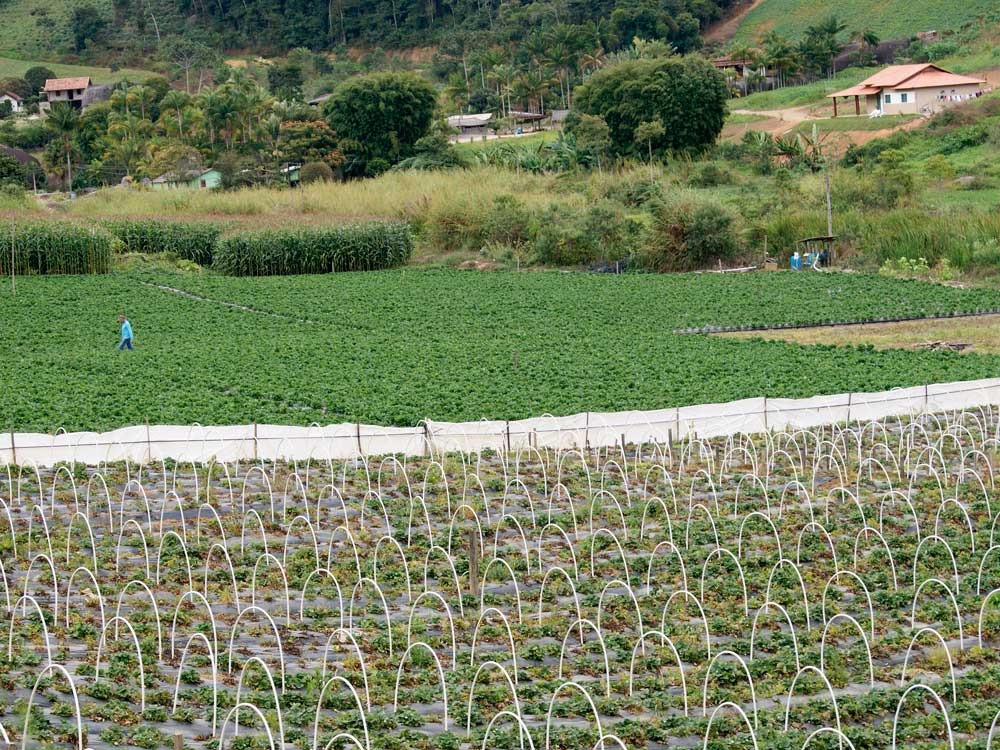Ecosystem services in Santa Maria de Jetibá, Brazil
FC-02x Livable Future Cities (1st Run) - Compulsory Exercise 4

Uploaded on 2015-12-08 by Davidcae
Food: Santa Maria de Jetibá is well known as the agricultural heart of my state. It produces a wide range of fresh vegetables, fruits and flowers, besides it owns the second largest egg production from the country. Raw Materials: as a rural-based economy city, there are several agroindustries that use reforested wood, such as eucalyptus and cedar, for pallets, furniture and package production. Fresh water: As a mountain located city, there are several rivers, creeks and springs, that supply not only its inhabitants but also the population from the state capital, as Santa Maria river, the one which supplies the treated water in the capital, begins in our municipality. Medical resources: there's no information about natural extraction by a pharmaceutical industry in our locality. However, the use of medicinal herbs is a popular custom in Brazil. Bilberry, gorse , fennel, lemon balm and others are part of a traditional set of plants that people uses regularly. ![Strawberry fields and cornfield][1] ![Small farm.][2] ![Eucalyptus.][3] ![Santa Maria river.][4] ![Medicinal herbs: Gorse.][5] b. Regulating services Local climate and air quality: The urban area is quite surrounded by forests, as well there are some trees along the streets in the urban areas. But there's some issue about local climate caused by asphalt paving that's increased up the temperature since it was installed. The air quality is good but sometimes some agricultural facilities located near the urban zone make the air be stinky due to bad quality solutions for animal dejects. Carbon sequestration and storage: as explained before, the urban area is surrounded by forests what allows to take carbon from atmosphere and storage in the trees and plants. Moderation of extreme events: here there's a huge problem about extreme events because the old flooding areas were all occupied by building in the past. Now the city endures a serious problem with floods and cliffs slides. Waste-water treatment: unfortunately water treatment and water-waste treatments do not cover all the urban population in my city. Most of water waste is thrown in rivers in natura. c. Habitat or Supporting services Habitats for species: there's no natural park in my city, but there's a plenty of forest zones where the wild life is somewhat protected. d. Cultural services Recreation and mental and physical health: there are not many places for sports and recreation in my city. Some small squares, a stadium and some sidewalks used for jogging are the only options currently. Tourism: agrotourism and adventure tourism are two main kinds of tourism existing here. Some farms offer bed and breakfast, besides a scheme where tourists can visit a field where they can collect fresh fruits and vegetables, all toxic free. Aesthetic appreciation and inspiration for culture, art and design: There's only a museum in the city (the pommeranian museum) because the city was settled by pommeranians in the end of XIX century. The Pommersprachen (The Pomeranian language) is widely spoken by population in everyday life. [1]: https://edxuploads.s3.amazonaws.com/14495763951412022.jpg [2]: https://edxuploads.s3.amazonaws.com/14495764487545235.jpg [3]: https://encrypted-tbn3.gstatic.com/images?q=tbn:ANd9GcRHuOcP9rjyAB5_cX8tLE1GOxOZzRFEv8yyCnMuTbeShZKKhFHS [4]: https://1v1imh.files.wordpress.com/2014/05/riosantamaria2.jpg [5]: https://encrypted-tbn2.gstatic.com/images?q=tbn:ANd9GcTXZ8UTp-cmW4mOk0BSPkwlK0Jw8x2Zy5HR7hRp2F709xvCpFX3